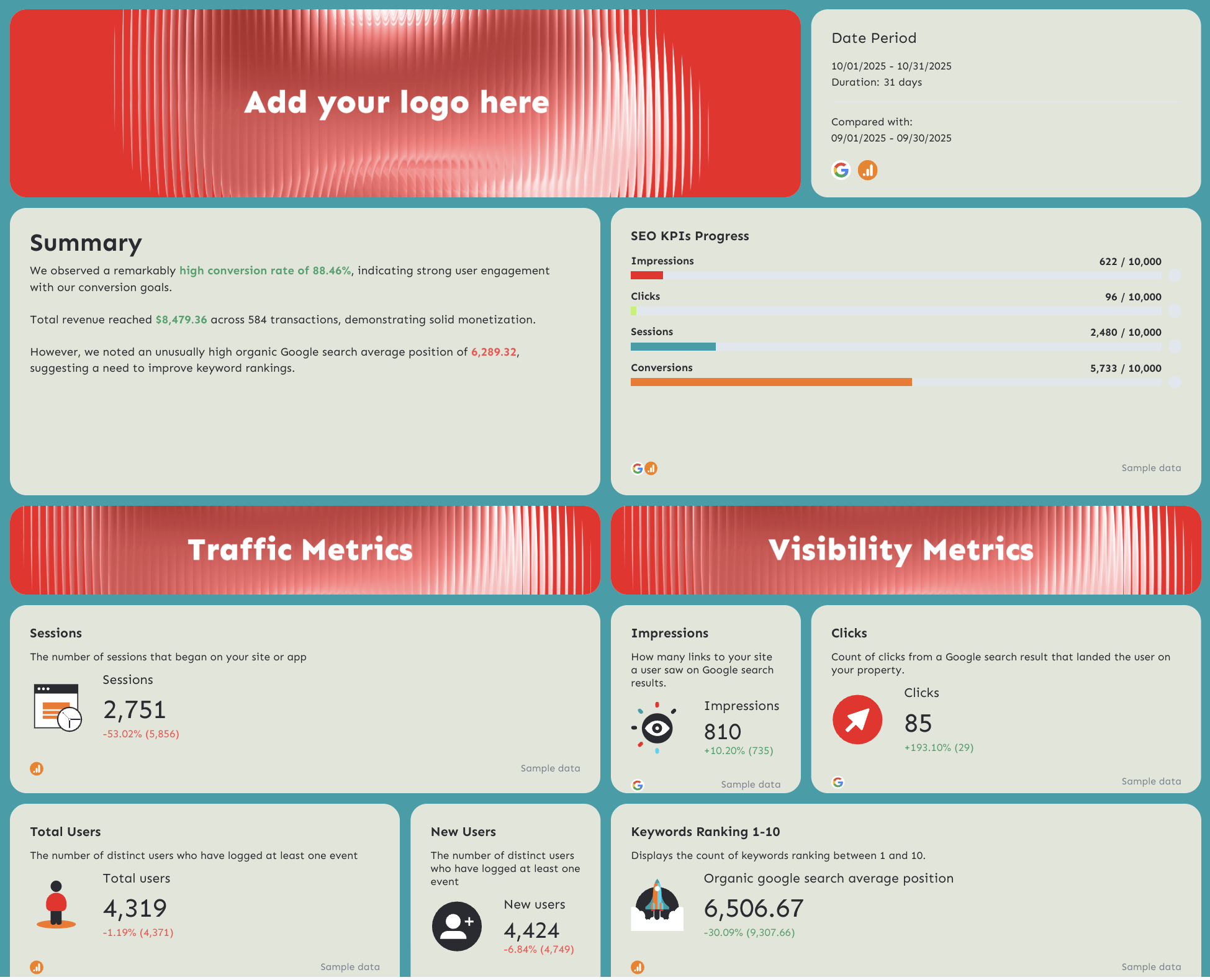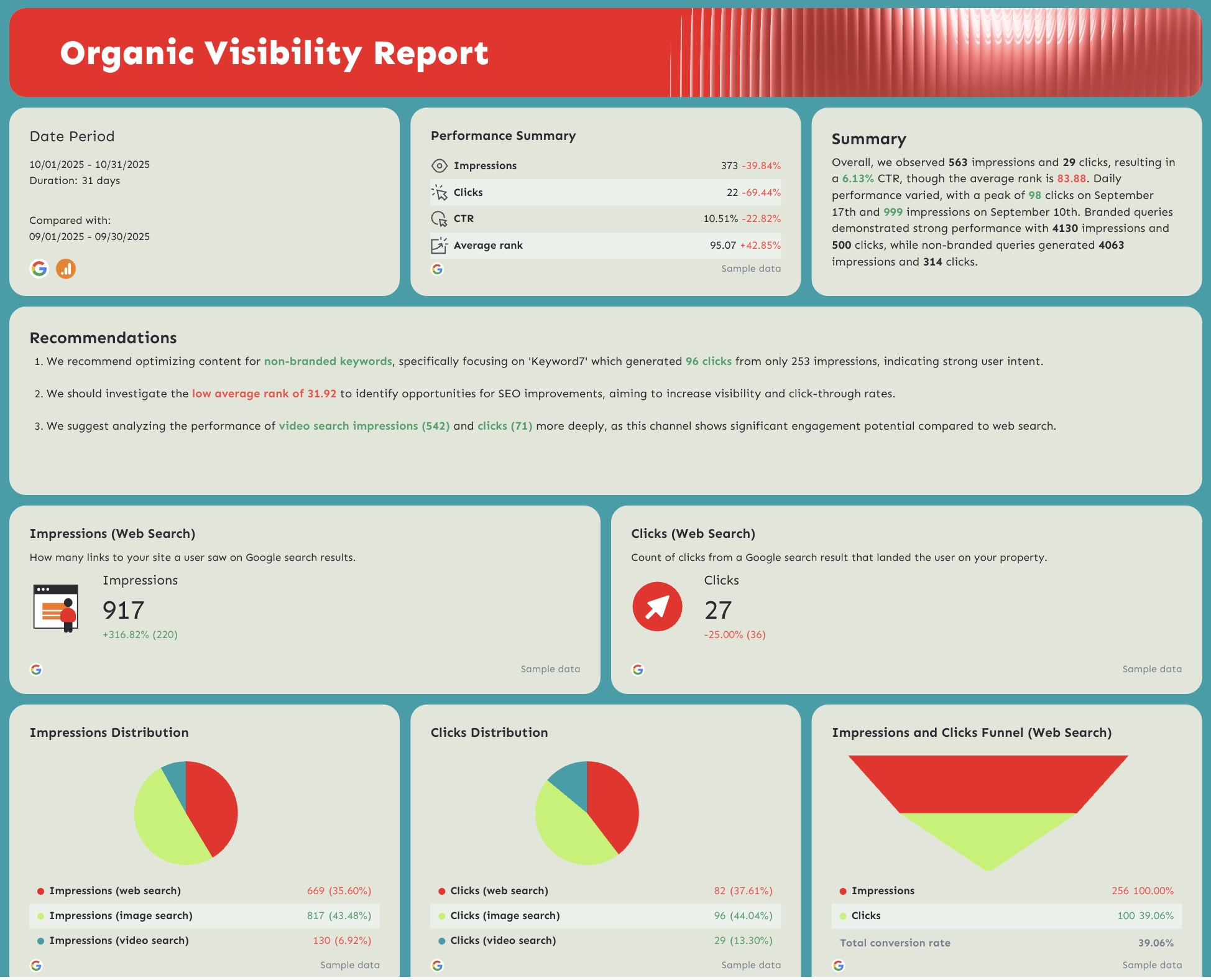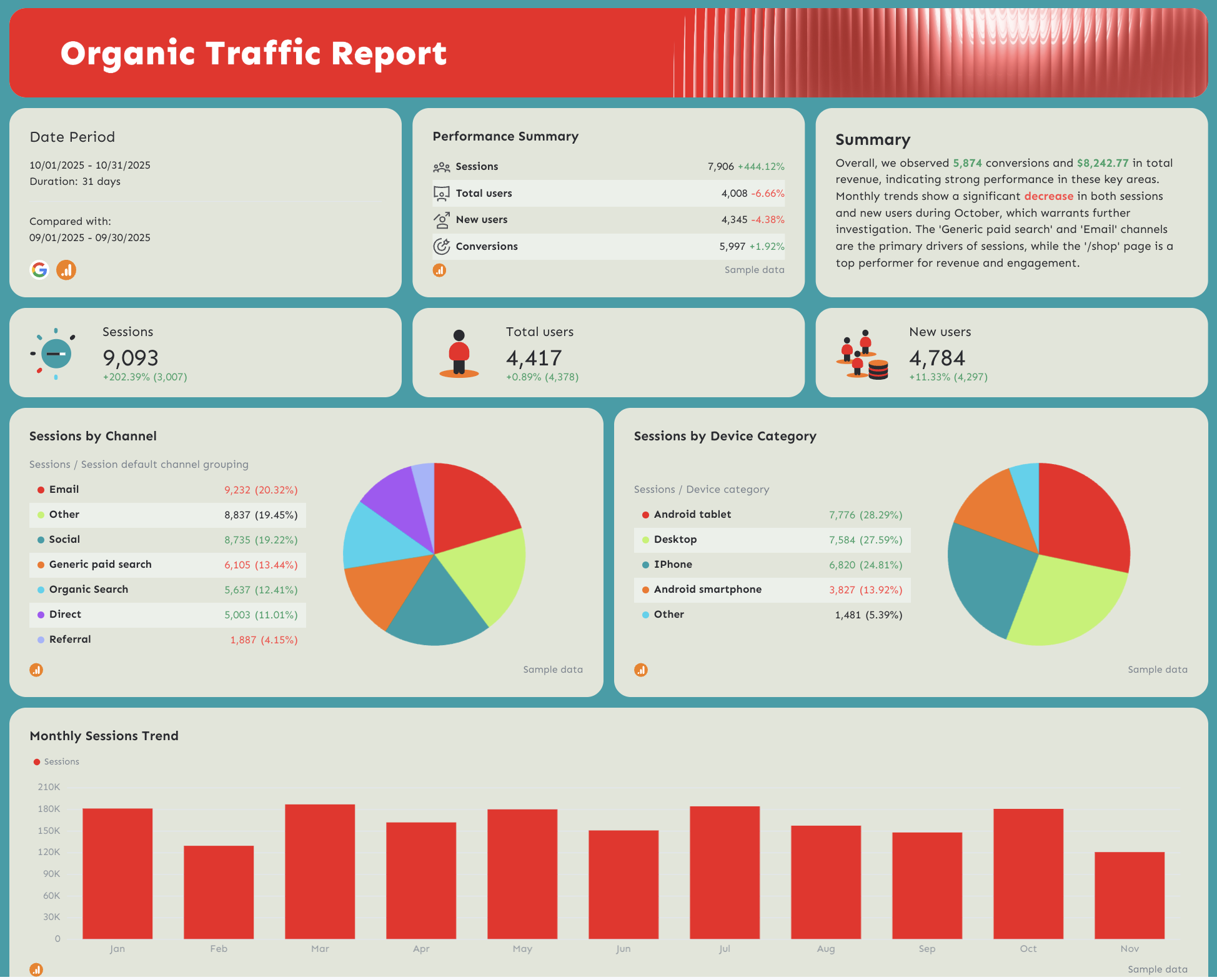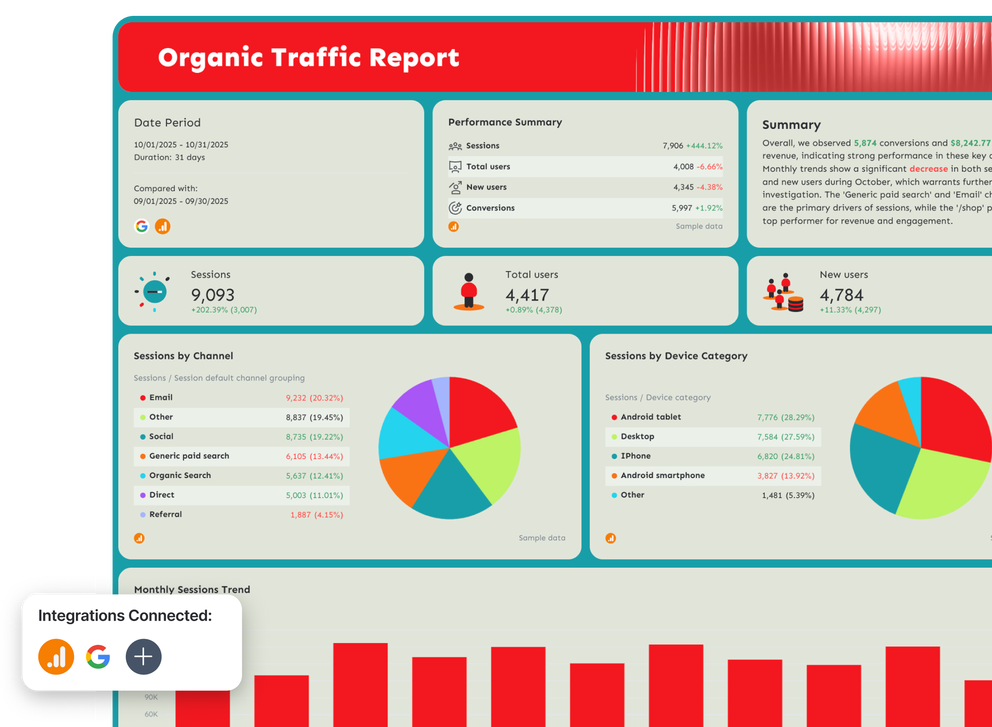What to Include in the Best SEO Reporting Templates
The best SEO reporting templates make it effortless for teams to track metrics, share SEO data with stakeholders, and connect SEO efforts directly to business goals.
Based on what we’ve seen from SEO specialists creating reports on Whatagraph, we recommend including these four sections in your SEO report template:
1. Performance Summary
 This opening section gives clients and internal teams a high-level breakdown of key metrics such as sessions, total users, new users, conversions, ecommerce purchases, total revenue, and average purchase revenue. It also includes SEO KPIs like impressions, clicks, and keyword rankings, all visualized through clean progress bars to immediately show SEO performance progress toward goals.
This opening section gives clients and internal teams a high-level breakdown of key metrics such as sessions, total users, new users, conversions, ecommerce purchases, total revenue, and average purchase revenue. It also includes SEO KPIs like impressions, clicks, and keyword rankings, all visualized through clean progress bars to immediately show SEO performance progress toward goals.
What’s included
- Sessions, total users, new users, and organic traffic performance
- Conversion metrics, conversion rate, and revenue totals
- Clicks, impressions, CTR, and average Google search position
- KPI tracking bars (impressions, clicks, sessions, conversions)
- Summary and recommendations - written by Whatagraph IQ automatically based on your data but also fully editable
Why it matters
This section gives a complete snapshot of SEO performance in one place, helping marketing teams make informed decisions and stakeholders understand SEO impact right away.
It blends SEO tools like GA4, Google Search Console (GSC), and Ahrefs, into a single visualization report so you don’t need multiple spreadsheets or manual work.
2. Organic Visibility Report

This section focuses on how well your website appears in search engines by surfacing impressions, clicks, CTR, average rank, branded vs. non-branded keyword rankings, and keyword performance trends over time.
It also highlights both branded queries and non-branded queries with granular insights into keyword rankings, SERP position, and click-through rate.
What’s included
- Impressions and clicks (web, image, and video search)
- CTR, average rank, and keyword rankings grouped by query type
- Keyword-level graphs for impressions and clicks
- Funnel visualization showing conversion rate from SERPs
- Branded vs. non-branded keyword performance and competitor analysis
- Query-specific performance tables for optimization and content strategy
Why it matters
Organic visibility determines how well your SEO strategy is improving search visibility, keyword rankings, and organic search performance.
This helps teams uncover opportunities to optimize on-page SEO, improve meta descriptions, tighten content performance, and boost CTR for high-intent keywords.
3. Organic Traffic Report

This section analyzes how visitors arrive on the site from organic search and how those sessions compare across channels, devices, and landing pages. It highlights landing pages, referral traffic, total users, engagement metrics, and overall website traffic trends throughout the month.
What’s included
- Sessions by channel (email, referral, direct, social media, organic search, PPC)
- Sessions by device category (desktop, iPhone, Android, tablet)
- Monthly sessions trend charts and new users trend charts
- Landing pages performance including engagement rate and bounce rate
- Data from Google Analytics, SEMrush, and organic search sources
Why it matters
Tracking organic traffic is essential for measuring SEO results, diagnosing SEO issues, and understanding whether your SEO campaigns are driving meaningful performance.
This helps you optimize landing pages, align content performance with business goals, and improve website performance where traffic may be dropping.
4. Organic Conversions Report

This section connects SEO efforts directly to revenue by tracking conversions, ecommerce transactions, device revenue, source/medium revenue, demographic conversions, and monthly conversion trends.
It gives an in-depth look at which channels, landing pages, and campaigns influence the highest conversion rates.
What’s included
- Conversions, ecommerce purchases, purchase revenue, and event count
- Revenue by device (Android, Desktop, iPhone, etc.)
- Revenue by session source (organic, affiliate, referral, social media)
- Conversion trend graphs and month-on-month revenue charts
- Page-level revenue, domain authority insights, and backlink profile context
- Engagement conversions and segmentation (demographics, content groups)
Why it matters
Organic conversions are the clearest measure of SEO performance. This section shows whether organic search is turning traffic into revenue, helps ecommerce teams optimize conversion rates, and supports marketers in aligning SEO reports with actionable insights that improve SEO strategy and website’s performance.





